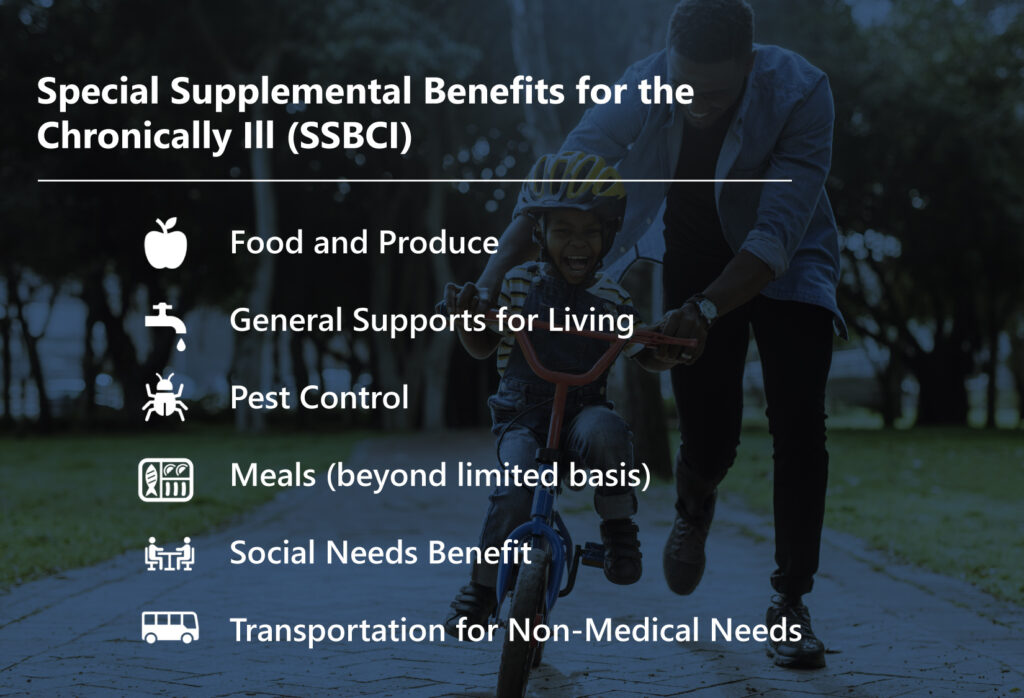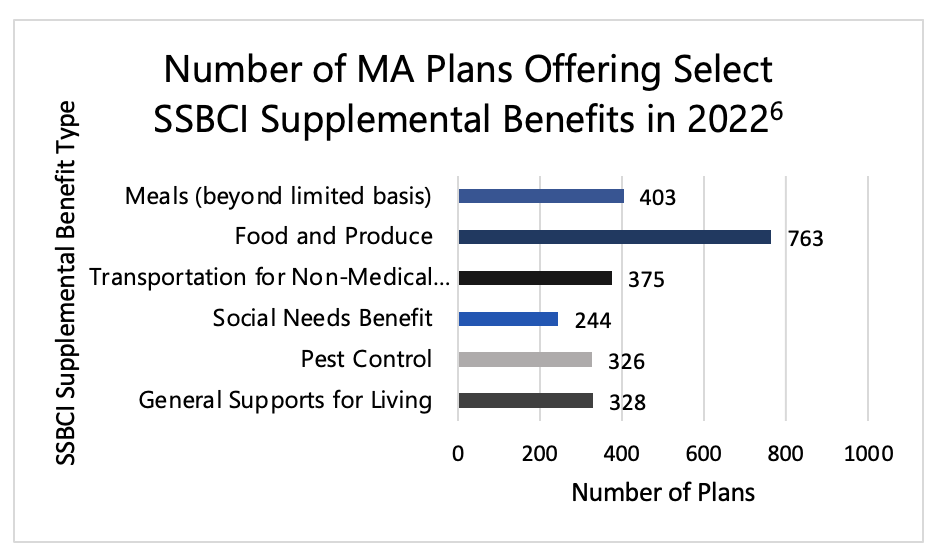How Medicare Advantage Organizations Can Drive Health Equity
Let’s have a conversation
Over the last decade, there has been increasing research and awareness surrounding the impact of Social Determinants of Health (SDOH) on health. The Centers for Disease Control (CDC) reports that SDOH have a greater impact on health than genetics or access to healthcare services.1 Organizations from the international level to the local level are prioritizing interventions that advance health equity by producing policies and increasing funding for programs and interventions with an SDOH focus. The World Health Organization (WHO) defines SDOH as “non-medical factors that influence health outcomes”2 and the US Department of Health and Human Services (HHS) has grouped SDOH into 5 domains: Economic Stability, Education Access and Quality, Health Care Access and Quality, Neighborhood and Built Environment and Social and Community Context.3 The Centers for Medicare and Medicaid Services (CMS) is also showing their commitment to SDOH through their updates to the Medicaid and Medicare programs.
Medicare Advantage Plans' Opportunity to Support SDOH
Prior to 2019, Medicare Advantage (MA) supplemental benefits had to be primarily health-related and offered on a uniform basis to all plan enrollees; but in 2019 CMS updated these guidelines to allow MA plans to cover benefits tailored to certain populations that address social needs or long-term care needs. MA plans can now offer benefits to enrollees who have a specific health status (Special Supplemental Benefits for the Chronically Ill or SSBCI) and offer benefits that directly address SDOH.4 Some of these benefits cover food insecurity, home safety, transportation and non-opioid pain management. Since these guidelines were updated, there has been a continued increase in organizations offering these benefits. According to research by ATI Advisory, in 2022 the number of plans offering SSBCI increased by almost 40%.5

As shown in Figure 1, the most common SSBCI benefits offered in 2022 were categorized as food and produce, pest control, transportation for non-medical needs, meals, social needs benefit and general supports for living.5 Figure 2 reports the number of plans that offered these SSBCI supplemental benefits to their members in 2022.

Health plans serving the Medicare population are critical to driving health equity. In 2022, there were more than 28 million people enrolled in a MA plan and over half of these enrollees had at least one unmet SDOH need (AARP).7 By designing their supplementary benefits, these organizations prioritize what services are valued and have the opportunity to greatly impact members’ health outcomes and even their own Return on Investment (ROI). Offering benefits that impact SDOH can reduce the total cost of care, improve utilization, increase member satisfaction and result in higher member retention. In a study conducted by WellCare Health Plans and the University of South Florida College of Health, they found that people who were successfully connected to social services had a 10% reduction in healthcare costs.8
SDOH is innately complex and a study by NORC at the University of Chicago points out that there are further complexities in addressing SDOH. The study suggests that providers don’t have difficulties understanding what benefits each plan offers, who is eligible and what is necessary for their patients to sign-up.9 The article even suggests that providers feel they need to become experts in supplemental benefits to fully support their patients.9 Similarly, beneficiaries have limited awareness of what they have access to. Care Managers become increasingly important in identifying eligibility and enrolling in services. Therefore, organizations that choose to offer these supplementary benefits need to understand how to effectively manage them to fully see the benefits for their members and their ROI.
The Challenges to Implementing SDOH Supplemental Benefits
Like many of the governing agencies throughout the United States, SDOH is at the forefront of many payer organizations’ goals for the coming years. Even America’s Health Insurance Plan (AHIP) launched “Project Link” which aims to bring together payer organizations across the United States to build sustainable SDOH solutions.10 In 2019, their board said that SDOH is an “essential part of the industry’s long-term vision for improved health and financial security.”10 There has been an increase in supplemental benefit offerings impacting SDOH each year since 2019.11 Thoughtful and deliberate implementation of the benefits is critical to success for the payer organization, the provider and the members themselves. Benefit design and selecting which benefits to offer is often the first hurdle for payer organizations. The ability to understand the SDOH impacting the organization’s members allows the organization to use these benefits as a differentiator from competing plans – these benefits can entice members and increase enrollment. The benefits can also serve members in a way that improves their health outcomes and eventually decreases medical costs and increases the ROI.8 After the supplemental benefits are chosen, it’s also important to roll them out in a way that providers, care managers and members can understand. Availability, eligibility, the process to use the benefits and the potential benefit of the benefits need to be well-communicated.

How ProspHire Can Help
At ProspHire, we understand the importance of SDOH and strive to promote health equity. We also understand the complexities and barriers that healthcare organizations face when trying to do the same for their customers. Our team of practitioners have extensive healthcare industry knowledge and are ready to discuss your SDOH goals and how we can help you reach them. Connect with us today.
References
- Why Is Addressing Social Determinants of Health Important for CDC and Public Health? |<<n About | CDC
- Social determinants of health (who.int)
- Social Determinants of Health - Healthy People 2030 | health.gov
- CMS finalizes Medicare Advantage and Part D payment and policy updates to maximize competition and coverage | CMS
- Advancing Non-Medical Supplemental Benefits in Medicare Advantage | Resources for Innovations in Care | ATI Advisory – Chartbook: 2022 New, Non-Medical Supplemental Benefits
- DEPARTMENT OF HEALTH & HUMAN SERVICES (cms.gov)
- SDOH-among-older-adults-2017_IssueBrief_COR-Final.pdf (aarp.org)AARP - SDOH-among-older-adults-2017_IssueBrief_COR-Final.pdf (aarp.org)
- Social determinants shown to reduce healthcare spending | Healthcare Finance News
- Innovative-Approaches-to-Addressing-SDOH-for-MA-Beneficiaries-FINAL.pdf (bettermedicarealliance.org)
- AHIP - Insurance Companies Are Investing in the Social Determinants of Health, But Widespread Changes in Benefits Remain to be Seen - Center on Health Insurance Reforms (chirblog.org)
- MA-Supplemental-Benefits-Milliman-Brief_20220225.pdf (bettermedicarealliance.org).
ProspHire
216 Blvd of the Allies, Sixth Floor
Pittsburgh, PA 15222
prosper@prosphire.com


© 2025 ProspHire, LLC. All Rights Reserved / Terms of Use / Privacy Policy







